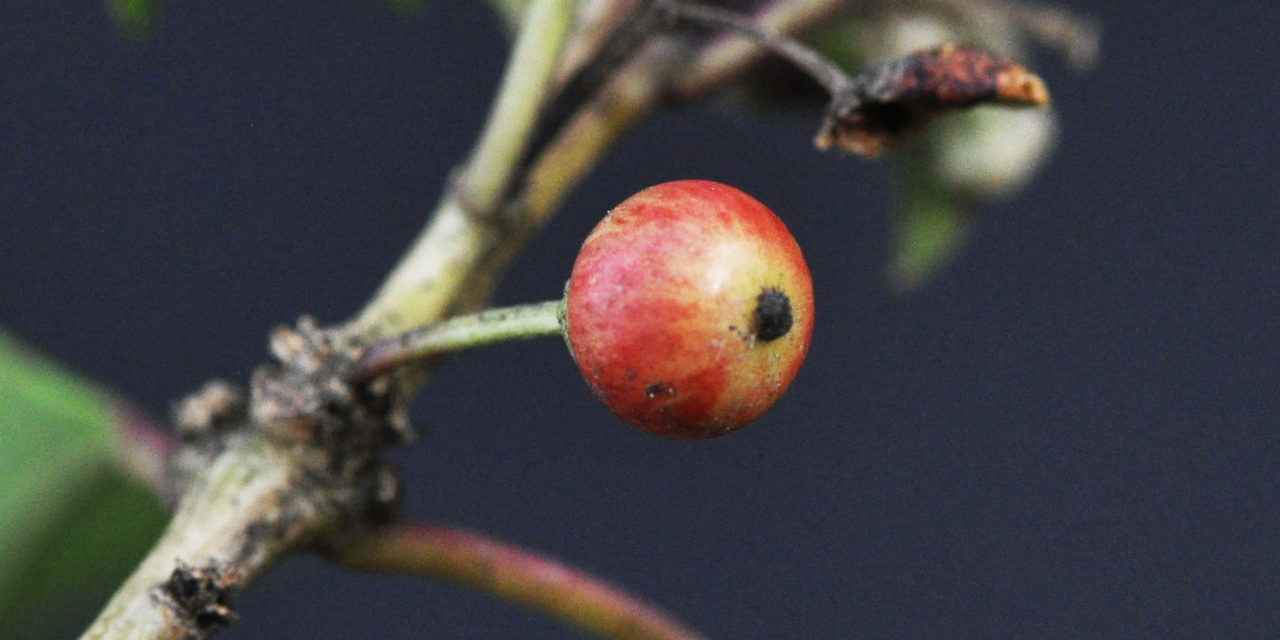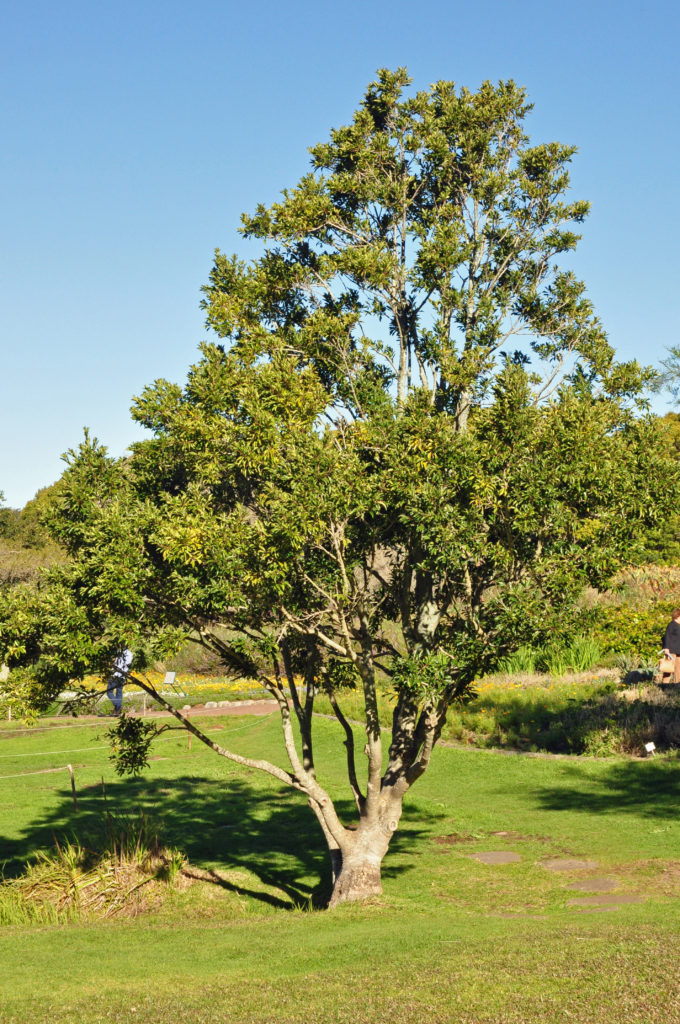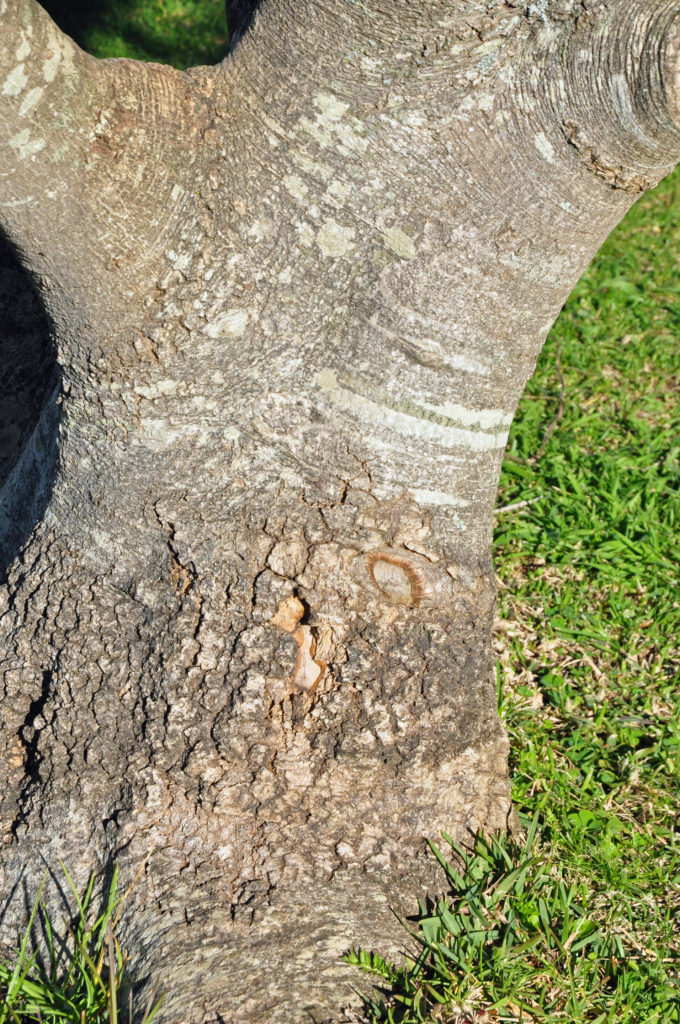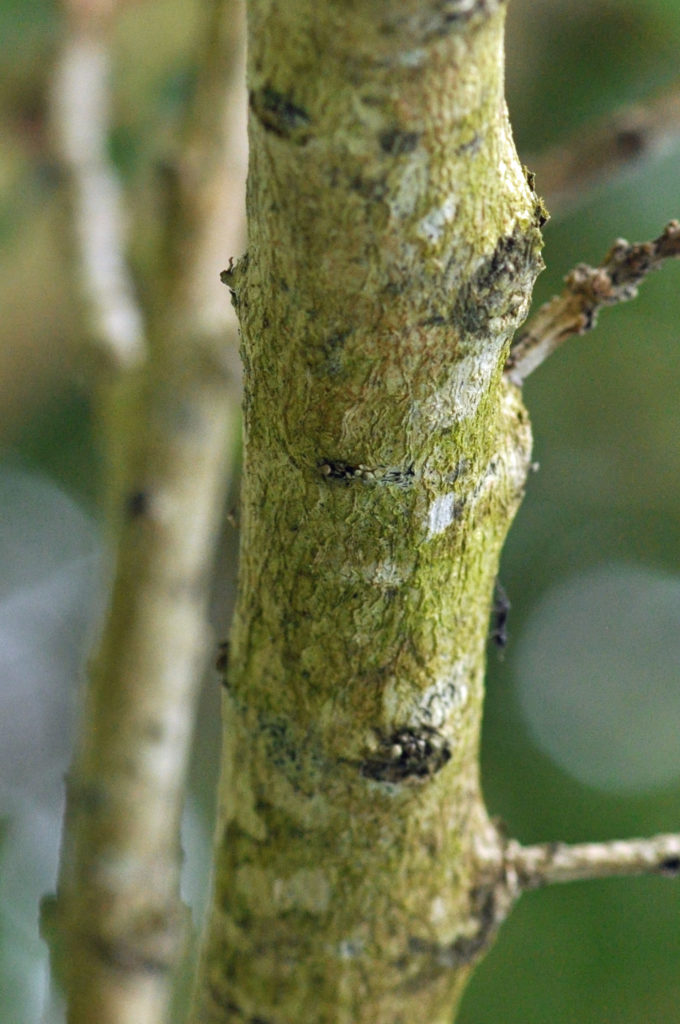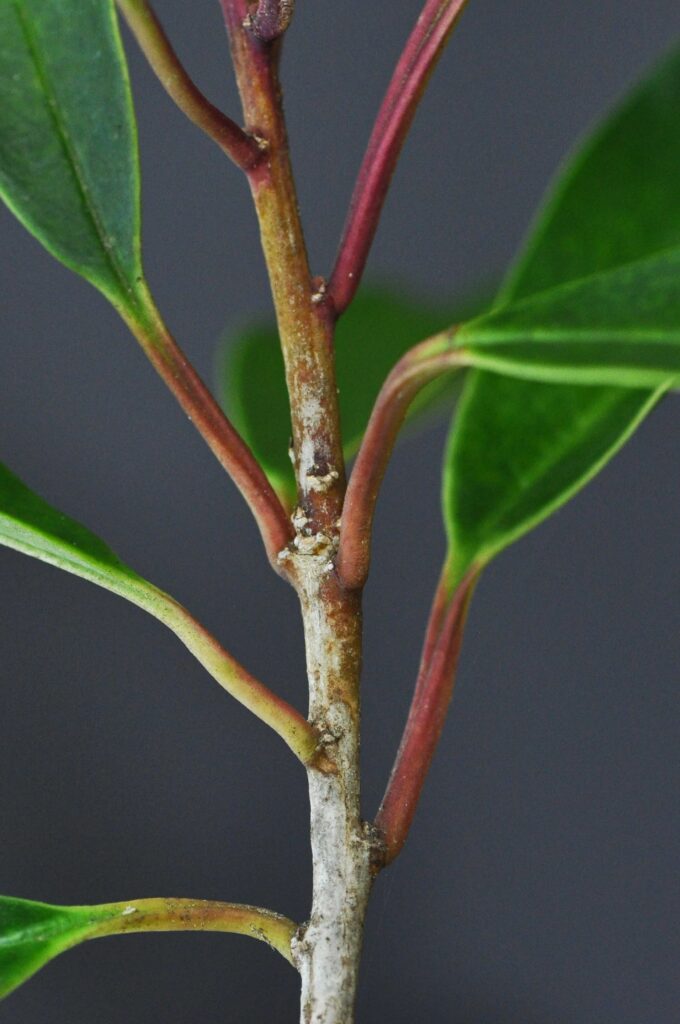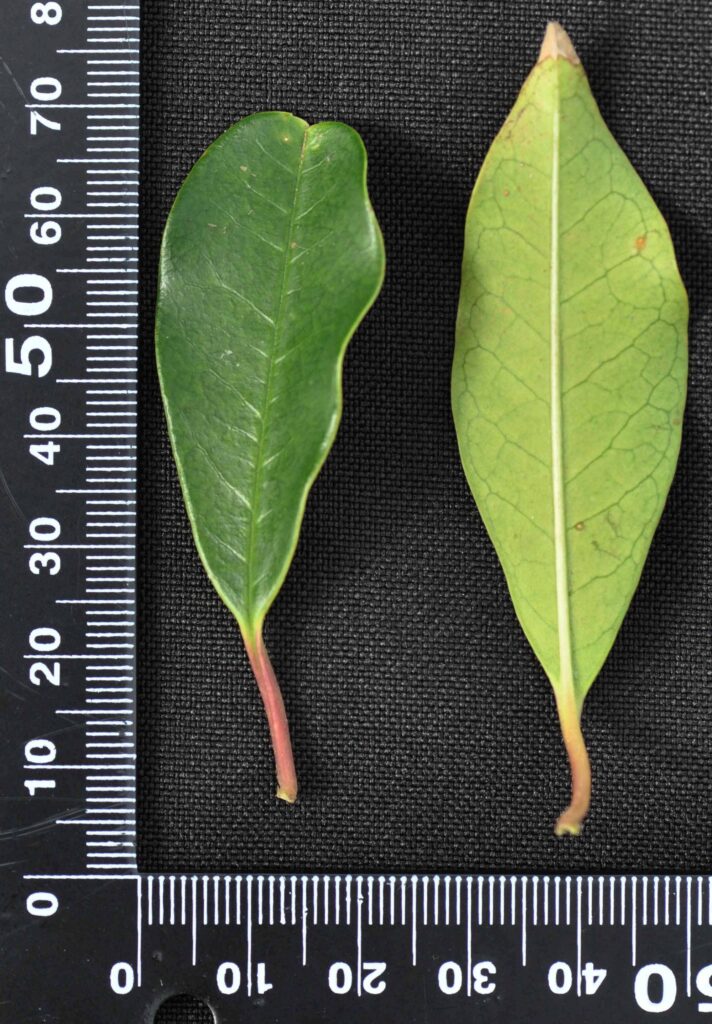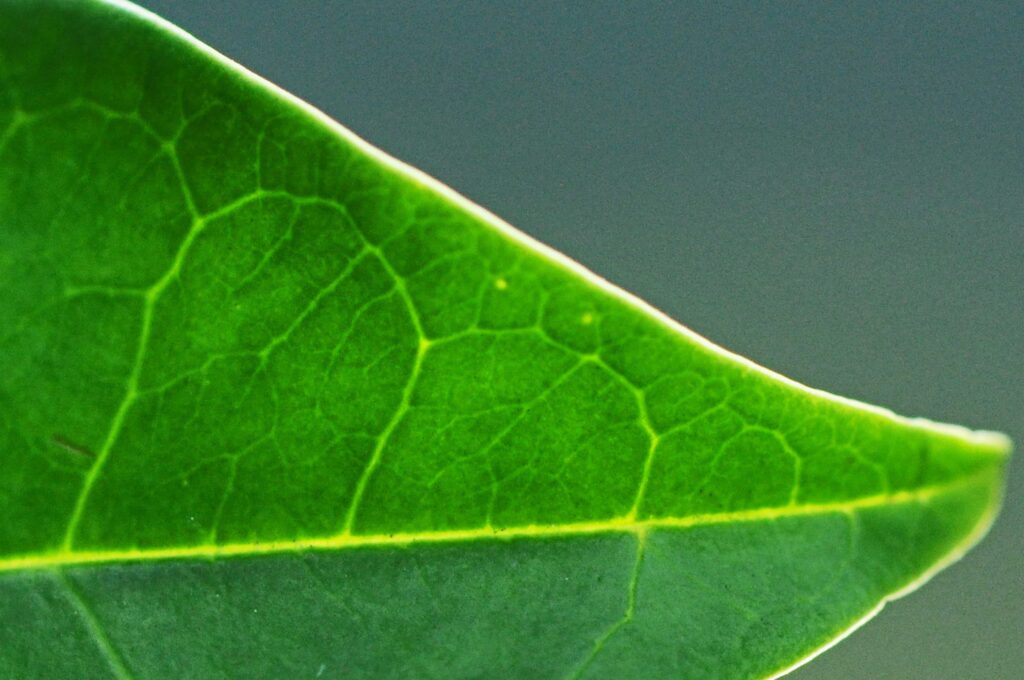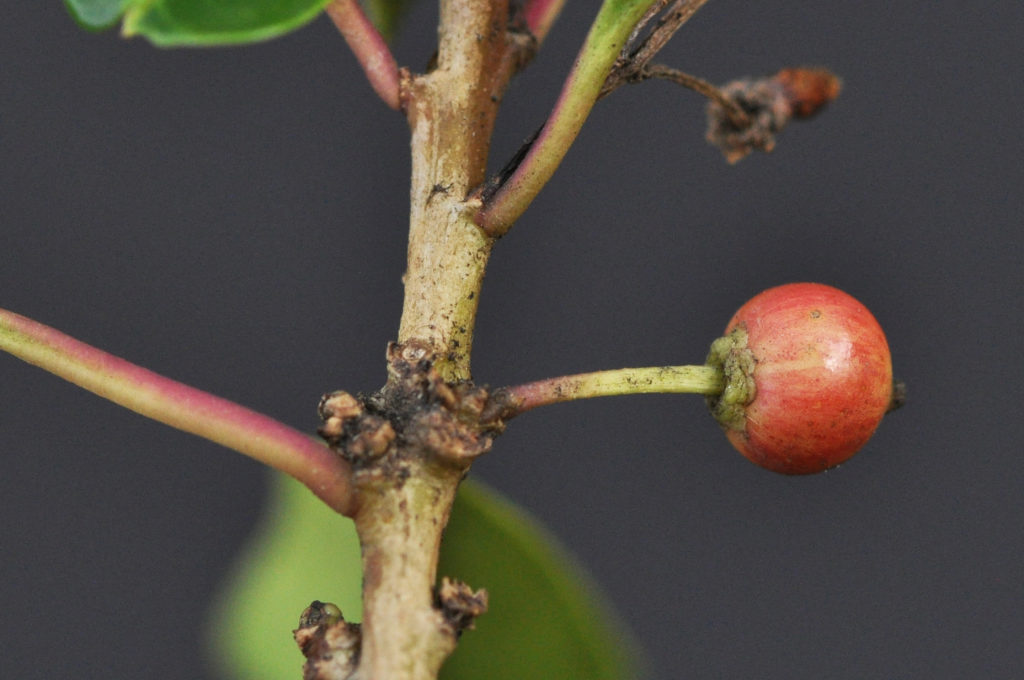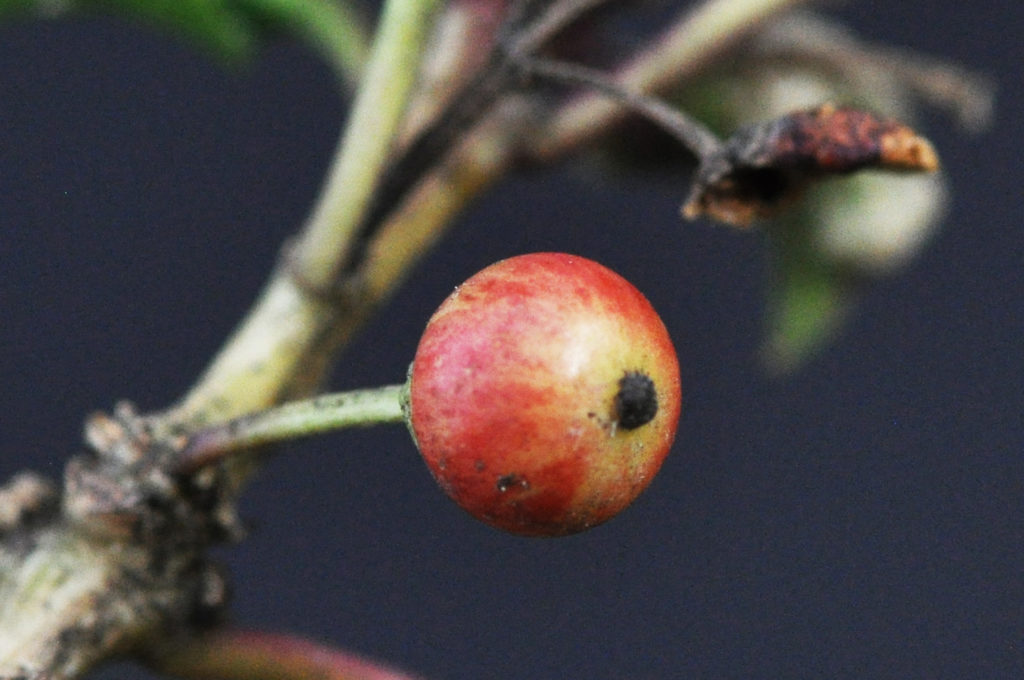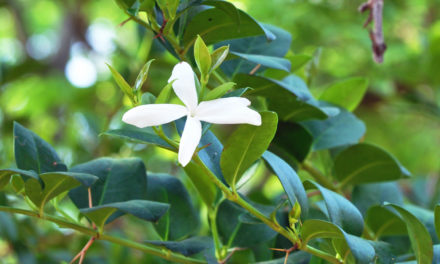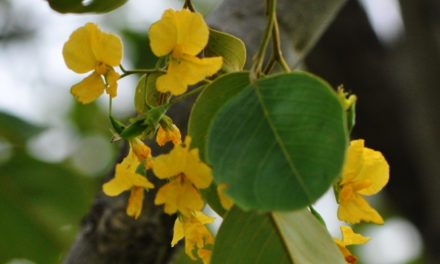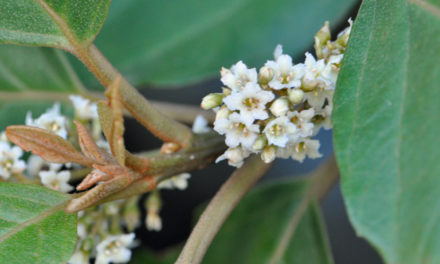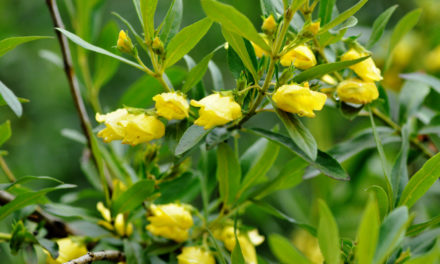General Info – summary
This dioecious, evergreen and shiny-leafed Tree has light coloured bark and may grow up to 30m high. The simple, hairless Leaves have a pink tinged indented above petiole. Side veins loop prior to reaching the margin. White, sweet scented actinomorphic Flowers (separate male and female) are small and 5-merous. Fruit, an edible berry, turns red & has a distinct pedicel. Birds are attracted to the fruit.
Description
Ilex mitis
Previous Names: Ilex capensis, Sideroxylon mite.
SA Tree No. 397.
Common names: (Afr) Waterboom, Waterhout, Waterpeer, Witboom, Without, Withoutboom, Witteboom, Wittehout, Witwaterboom, Witwaterhout. (Eng) African Holly, Cape Holly, Water Pear, Water Tree, Water-tree, White Wood, Wild Holly. (isiXhosa) Icimamlilo, Isidumo, Ubhubhubhu, Umduma, Unduduma, Unduma. (isiZulu) Iphuphuma, Isidumo, Unduma. (Northern Sotho) Monamane. (Setswana) Mofusata, Phugile, Phukgu, Phukhu, Motoo A Phofu. (siSwati) Inchitsamuti, Libota, Litota. (Tshivenda) Mutanzwa-khamelo.
Family: Aquifoliaceae has dioecious evergreen trees or shrubs. These trees or shrubs are evergreen with alternate, simple Leaves, which may be entire or toothed. The small actinomorphic Flowers are 5 or 6-merous and the calyx and corolla are imbricate (with regularly arranged, overlapping edges) and ciliate (bearing hairs on the margins). There are usually 4 Stamens which are attached to the petals and the Anthers usually are 2-thecous (2 pollen sacs – microsporangia of an anther. They produce microspores – the pollen grains in seed plants). These anthers dehisce longitudinally. The superior Ovary has 1 ovule per carpel + a short style. The Fruit is usually a drupe with 5 or 6 pyrenes (the small nuts in a drupe). Seeds have plentiful endosperm (the starch and oil-containing tissue of many seeds; often referred to as the albumen). Ilex mitis variety mitex is the only one that occurs in southern Africa.
Name derivation: Ilex – from the name of Quercus ilex the Holm oak. mitis – soft or unarmed. Although not indigenous, the Christmas holly (Ilex aquifolium) is a widely recognisable member of this genus. There are about 400 species worldwide – mostly in the tropics and temperate areas of America and Asia. The European Holly (Ilex aquifolium) is closely related to this plant and has shiny red fruit and spiny edged leaves.
Conservation: National Status: L C (Least Concern). Assessed: 2016 (V.L. Williams, D. Raimondo, N.R. Crouch, A.B. Cunningham, C.R. Scott-Shaw, M. Lötter & A.M. Ngwenya). Bark harvesting may become a problem in the future.
Tree
This often well-shaped Tree (photo 172) is medium to large and up to 30m high (taller towards the east and northwards). It may also be short and straggly. The diameter of the Stem (main axis of the plant, the leaf and flower bearing as distinguished from the root-bearing axis) may be in excess 0,6m. The tree is dioecious (unisexual floral structures with male and female parts on separate plants). The developing Crown may become dense. The plant may also be a short and straggly shrub. The Bark is pale grey to light brown to almost white and contrasts attractively with the dark green leaves. Young twigs are reddish/purple (photo 1003 under Leaves). The usually round young trunk is initially smooth with transverse ridges, but becomes rough, fissured and whitish (photo 173). Lichen (specialised fungi cultivate algae partners that manufacture food for them by photosynthesis) may be present (photo 1009).
- 172. 2018/09/10. Kirstenbosch. Photo: David Becking.
- 173. 2018/09/10. Kirstenbosch. Photo: David Becking.
- 1009. 2018/09/15. Kirstenbosch. Photo: David Becking.
Leaves
The alternatively/spirally arranged Leaves (photo 1003) on this evergreen tree are narrowly elliptic to lanceolate and simple (have a single blade, which may have incisions that are not deep enough to divide the leaf into leaflets). Leaves may reach 11 x 3,5cm and exposed leaves are leathery. The dark, almost hairless, shiny leaf Blade has a pale Midrib that distinctively protrudes below and is sunken above (photo 1008). The leaf Apex is rounded, tapers to a point and may have a very fine hair-like tip. The Base of the leaf tapers. The lower side Veins are clearer. Finer details can observed when the leaf is observed against a strong light – aided with a hand lens (photo 1006). Here the side veins loop prior to reaching the margin (photo 1008). The rolled under Margin may be wavy and is usually entire (with a continuous margin, not in any way indented) but occasionally, has a few shallow, sharp teeth towards the apex. This is more common in juvenile leaves. Young and coppice (case when stems are cut or burned it causes regrowth from the stump or roots) leaves may be serrate. The Petiole (leaf stalk) may reach up to 1,5cm long. It is often pink/purple-tinged and channelled above (photo 1003). This helps with tree identification. Very Small, semi-persistent Stipules (basal appendages of the petiole) are present.
- 1003. 2018/09/15. Kirstenbosch. Photo: David Becking.
- 1008. 2018/09/15. Kirstenbosch. Photo: David Becking.
- 1006. 2018/09/15. Kirstenbosch. Photo: David Becking.
Flowers
Each white, sweet-scented Flower is small – about 6mm wide and rests on a distinct, 4mm long Pedicle (stalk of a single flower). Flowers may develop in few flowered Panicles (indeterminate, branched inflorescence with stalked flowers) up to 3 cm long in axillary clusters. Individual flowers are actinomorphic (Regular, symmetrical. Flowers are vertically divisible into similar halves by more than 1 plane passing through the axis). Both the sepals and the white petals are imbricate (have regularly arranged, overlapping edges). The small persistent Calyx surrounds the short Petals that are slightly joined at the base. The tree is dioecious (unisexual floral structures with male and female parts on separate plants). In the Male flowers, the Stamens lie between the petals and are attached to the mouth of the corolla tube. Here the Anthers are 2-thecous (have 2 pollen sacs) and pollen release occurs through longitudinal slits. The ovary is rudimentary. In the Female flowers, both stamens and staminodes are absent. The single Pistil is a unit of the gynoecium, composed of the stigma, style – when present and ovary. Here the superior Ovary has 5 or 6 locules (chambers within an ovary). The Stigma (the part of the pistil that receives the pollen) is sessile. (Sep-Feb).
Fruit
The shiny, almost spherical Fruit may be produced in profusion and each rests on a distinctive Pedicel (the single stalk of a flower – photos 1001 & 1002). Fruit is an almost spherical Berry (pulpy, indehiscent fruit like a grape or tomato) that is up to 7mm wide. Each berry takes some time to develop and produces 5-6 Seeds. The ripening fruit become pink and finally bright red (photos below). At this stage, the fruit is conspicuous and attractive. (Mar-Jul).
- 1001. 2018/09/15. Kirstenbosch. Photo: David Becking.
- 1002 2018.09.15 Kirstenbosch. Photo: David Becking.
Distribution & Ecology
This well-shaped Trees is one of our faster growing indigenous species. It is usually associated with riverbanks (where it may lean over the stream or river) and moist areas, near streams, in evergreen forests and even in the open. An example is the Albany Thicket (a Subtropical Transitional Thicket in the Eastern Cape. It includes well-drained sandy soils in the wide valleys of the Great Fish, Sundays and Gamtoos Rivers – in the Eastern Cape, extending further northwest, in the valleys of the Cape Fold Belt). This tree grows naturally from close to sea level, to inland mountain slopes e.g., Cape Peninsular and the Cederberg. This tree occurs on Table Mountain in the Western Cape, Eastern Cape, KwaZulu-Natal e.g. Royal Natal National Park, Mpumalanga, Limpopo, Gauteng, North West and the Free State – but not the Northern Cape. Beyond our borders, it also occurs in Lesotho, Swaziland, Mozambique, Zimbabwe and northwards to Angola, Ethiopia and well as Madagascar. Trees may stand-alone and established trees can survive mild frost. The Fruit attracts flocks of birds. Elephants relish the Leaves.
Ethnobotany
The Fruit is edible, and the whitish Wood is close-grained, hard and dense. It was one of the woods used for making wagon wheel spokes. This is potentially a good furniture wood but not currently much used. The wood is used for fuel and for making implement handles. Rubbing fresh Leaves in water produces a lather, which is useable for washing. The Leaves and Bark are used in local medicine. Seeds should be dry before planting and usually germinate in under 3 weeks. They grow best near a stream or in a damp area. The seeds germinate quickly. For fruit development, both male and female trees must be present. Here Truncheons stem cutting from selected male and female plants is suggested – instead of seeds, because they produce genetically identical new male and female plants. The roots are not invasive, and the tree can tolerate mild frost. Keep the young plants in the shade before transplanting.
References
Boon, R. 2010. Pooley’s Trees of eastern South Africa. Flora and Fauna Publications Trust, Durban.
Burrows, J.E., Burrows, S.M., Lotter, M.C. & Schmidt, E. 2018. Trees and Shrubs Mozambique. Publishing Print Matters (Pty) Ltd. Noordhoek, Cape Town.
Coates Palgrave, M. 2002. Keith Coates Palgrave Trees of Southern Africa. edn 3. Struik, Cape Town.
Lawrence, G. H. M, 1951. Taxonomy of Vascular Plants. The Macmillan Company, New York. Tenth Printing 1965.
Palmer, E. & Pitman, N. 1972. Trees of southern Africa. Balkema, Amsterdam, Cape Town.
Schmidt, S. Lotter, M. & McCleland, W. 2002. Trees and Shrubs of Mpumalanga and the Kruger National Park.
van Wyk, B. & van Wyk, P. 1997 Field guide to Trees of Southern Africa. Struik, Cape Town.
Williams, V.L., Raimondo, D., Crouch, N.R., Cunningham, A.B., Scott-Shaw, C.R., Lötter, M. & Ngwenya, A.M. 2016. Ilex mitis (L.) Radlk. var. mitis. National Assessment: Red List of South African Plants version 2020.1. Accessed on 2023/07/24.
http://pza.sanbi.org/ilex-mitis
http://redlist.sanbi.org/species.php?species=2182-2
http://posa.sanbi.org/flora/browse.php?src=SP
https://www.justtrees.co.za/blog/2017/09/26/types-of-trees-ilex-mitis-cape-holly/
https://en.wikipedia.org/wiki/Ilex_mitis
https://www.zimbabweflora.co.zw/speciesdata/species.php?species_id=136880
https://en.wikipedia.org/wiki/Ilex_mitis#/media/File:Ilex_mitis_-_blossoms_-_2.jpg

